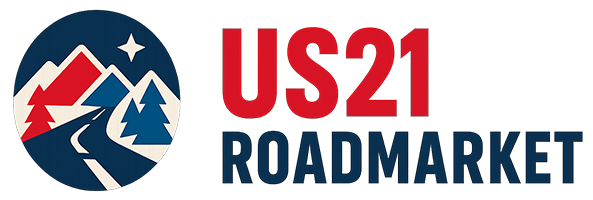Your first international trade shouldn’t feel like defusing a bomb. If you’re traveling across the EU or Latin America and want to buy US stocks from abroad, this guide gives you a friendly, step-by-step path—from the nerves before you click Buy to reading your first trade confirmation like a pro.
Introduction: The anxiety of placing your first international trade
Placing your first cross-border order is a cocktail of excitement and doubt: Is my account funded yet? Will the currency conversion happen in time? What if the market moves while I’m fumbling with order types? Add jet lag, airport Wi-Fi, and a phone juggling eSIMs, and it’s easy to freeze. You’re not alone. Even experienced investors admit their palms sweat the first time they trade US shares overseas from a foreign IP.
Here’s the truth: the mechanics are simple once you respect three friction points—funding, FX timing, and order entry discipline. Funding means your deposit has cleared and is available to trade. FX timing means you’ve converted EUR/GBP/BRL/MXN to USD (if your broker requires it) at a rate and fee you understand. Order discipline means you choose an order type that’s appropriate to your conditions (mobile connection, volatility, spreads) and you size the order modestly—especially for a first test.
This guide keeps jargon to a minimum and shows you what to check before you trade (with a pre-trade checklist), how to pick between market and limit orders abroad without second-guessing yourself, and what happens after the fill (settlement, confirmations, and when buying power returns). We’ll also show why fractional shares are the nomad’s secret weapon, how ADRs let you buy international companies on US exchanges, what fees actually matter, and how to avoid classic first-trade mistakes. By the end, you’ll have the confidence to buy US stocks from Spain or anywhere in the EU/LatAm, even if you’re on hotel Wi-Fi and a flaky hotspot.
Paperwork first: Basics of W-8BEN-E and FATCA for Non-US Nomads.
Pre-trade checklist: What to verify before you click “buy”
Your best friend is a short, repeatable pre-trade routine. Run through it every time you trade on the road—especially the first time on a new broker, SIM, or Wi-Fi.
Account funding status and settlement time
Confirm whether funds are credited and cleared. Transfers like SEPA (EUR) can be fast; SWIFT wires may take a few business days depending on correspondent banks. Your broker will show cash available to trade and cash available to withdraw—don’t confuse them. If you moved money in a different currency than USD, check whether the broker auto-converted or kept it in a multi-currency balance. Also note the US equity settlement standard is now T+1 (trade date plus one business day), not T+2—so your cash and shares settle a day after the trade for most transactions. That shorter window affects how soon proceeds can be reused or withdrawn.
Quick test: open your account’s cash activity and confirm today’s balances, pending deposits, and any holds. If your balance shows “unsettled,” it doesn’t block you from buying in a margin account, but it matters for withdrawals and subsequent sells. For cash accounts, make sure funds are fully available.
Currency conversion and FX timing
If your broker requires USD to buy US stocks, plan the FX leg before the trade. Some platforms let you hold multiple currencies and perform an explicit FX conversion (you see the commission and rate). Others silently auto-convert at a spread wrapped into the price. The difference between a transparent 0.08–0.25% and an opaque spread repeated over years is huge. Convert before the session if possible, and record the rate in a notes app.
Action items:
- Check if you can place a stand-alone FX order;
- Note the fee or spread;
- Set a rule for yourself (e.g., convert once per month, not per trade) to reduce repeated friction.
Trading hours and market holidays
Regular US sessions run 9:30 a.m.–4:00 p.m. ET on business days. Many brokers offer pre-market (often from 4:00 a.m. ET) and after-hours (to 8:00 p.m. ET), but liquidity is thinner and spreads wider—use limit orders if you trade there. Check your local time conversion and any US market holidays before you plan funding or orders. If you’re traveling, build a habit: verify “Is the US market actually open right now?” before you press Buy.
Pro tip: Save a world clock for New York on your phone, and add your broker’s market hours page to bookmarks. If you must place an order while boarding, place a limit with a Good-’Til instruction (see next section) rather than firing a market order into a thin pre-market book.
Understanding order types for international traders
Order types are the controls on your cockpit. The goal is simple: use a type that enforces your price discipline when you’re trading from unstable connections or off-hours order books.
Market vs limit orders: which to use abroad
A market order fills at the best available price now. It’s simple and fast, but it exposes you to slippage—the executed price can differ from the quote, especially in pre/after hours or volatile moments. When you’re on hotel Wi-Fi, that risk multiplies: a brief lag can move the next best price by cents (or more) before your order hits.
A limit order says, “Buy at this price or better, otherwise don’t fill.” It removes slippage surprise but introduces fill risk—you might not get executed if the market never trades at your limit. For a first trade, especially outside regular hours, a limit is generally smarter: it caps your price, reduces anxiety, and lets you control the execution while you’re juggling travel logistics. During regular hours, liquid large caps may be OK with small market orders, but if the bid-ask looks wide (or you’re new), keep using limit.
Nomad pattern: Set a limit slightly above the current ask (for buys) to increase fill probability while controlling the price. For very liquid names, a mid-price limit (between bid and ask) can work, but don’t spend minutes haggling one cent while your Wi-Fi drops—price discipline beats perfection.
Good-’Til-Canceled (GTC) and time-in-force options
Time-in-Force (TIF) tells your broker how long the order should live. Common choices:
- DAY: Cancel at the end of today’s regular session if not filled.
- GTC: Keep the order active across days until it fills or you cancel (brokers often cap this at 30–90 days).
- GTD: Good-til-date; the order expires on a specific date.
Why it matters for travelers: if you’re crossing time zones, a GTC buy limit placed before bed can execute while you sleep—without you paying an outlandish price. Just ensure you review any stale GTC orders when news breaks; you don’t want an old buy order catching a knife weeks later.
Rule of thumb: For first trades, use DAY during regular hours; use GTC if you’re setting an entry while you’re in transit or asleep. Revisit all open orders after big news or earnings.
Stop-loss and trailing stops
A stop-loss becomes a market order once the stop price is touched; a stop-limit becomes a limit order at your specified price. Trailing stops move with the market by a set amount or percent, locking in gains dynamically.
They’re useful, but beware: in thin pre/after hours, a stop that triggers as market can fill at a worse price than you expect. For many first-time international trades in large, liquid stocks, a simple plan works: enter with a limit, manage risk with position size, and only add stops once you understand your broker’s behavior in extended hours.
Checklist: If you must use stops abroad—prefer stop-limit to control worst-case fills, and place them during regular hours when books are deeper.
Your first trade: step-by-step walkthrough
Here’s a walkthrough you can reuse, whether you’re in Barcelona, Bogotá, or Buenos Aires.
Finding the ticker symbol
Tickers are short codes (e.g., AAPL, MSFT) used to identify US-listed securities. Use your broker’s symbol search to avoid look-alike risks (some platforms list ADRs, ETFs, and multiple share classes). Confirm: company name, exchange (NYSE/Nasdaq), and instrument type (stock vs ADR vs ETF). If the broker shows primary exchange and composite quotes, prefer the composite for full NBBO context.
Tip: Add the ticker to a watchlist and observe a few minutes. Look at bid, ask, last, and intraday range. If the spread is wider than you’re comfortable with, size down or wait for regular hours.
Fractional shares vs whole shares
Fractional shares let you buy, say, $50 of AAPL instead of a whole share. For nomads, fractionals are gold: you can invest fixed cash amounts (your budget after a month of travel) without worrying about share prices or odd lots. They’re also brilliant for a first test trade—you can buy $20–$100 to verify execution, confirmations, and how your broker displays positions.
Caveats: Not every broker supports fractionals for all tickers; not all order types (e.g., extended-hours or stops) work with them; and some platforms route fractional orders in batch windows. Read your broker’s fractional trading help page before relying on it for time-critical entries.
Confirming the order
Open the order ticket and fill these fields in order:
- Action: Buy.
- Quantity: Shares (whole or fractional) or cash amount (if supported).
- Order Type: Limit for first trades (safer), with a price slightly above the current ask.
- TIF: DAY (or GTC if you need “fire and forget”).
- Extended Hours: Off (safer for beginners) unless you specifically want pre/after-hours.
- Review & Confirm: Double-check total cost, estimated fees, and settlement date. Take a screenshot for your records.
Mini-ritual: Say out loud what you’re doing (“Buy 0.5 share of AAPL at $X limit, DAY”). It reduces “fat-finger” errors and calms the nerves.
Post-trade: settlement and confirmation
You clicked Buy. What happens next?
T+1 settlement explained (and why many guides still say T+2)
For most US equity trades, the standard settlement is now T+1—one business day after trade date. Many older articles still mention T+2; ignore them. T+1 became effective May 28, 2024, shortening the window for cash/stock exchange and reducing counterparty risk. For you, that means proceeds and positions settle faster, and funds become available sooner for reuse or withdrawal, subject to your account type (cash vs margin) and your broker’s rules.
Why it matters: If you sell on Monday, settlement is Tuesday. Plan your FX and withdrawals around that date. If you’re moving money between currencies or banks while traveling, shorter settlement tightens your logistics, which is good—but also means you should avoid cutting it too close with transfers.
Reading your trade confirmation
Your trade confirm (often delivered within minutes) shows fill time, filled quantity, average price, fees/commissions, and net amount. Check that the symbol and side (buy/sell) are correct, your limit price was respected, and the commission/FX charges match expectations. Save the PDF in a “Brokerage/Year/Month” folder in your cloud drive; it’ll simplify taxes and support chats later.
If your broker supports mobile docs, download the confirm to your phone immediately. If you used a fractional order, confirms will still show shares—often to many decimal places. That’s normal.
When funds become available again
In a cash account, cash used for a buy leaves your available to trade until you sell and settlement completes (T+1). In margin accounts, you may have buying power immediately, but interest and regulatory rules apply—beginners should default to cash discipline. If you plan to withdraw while traveling, note your broker’s withdrawal cut-offs and whether you need to reconvert USD→EUR/GBP/BRL/MXN. Allow extra time if a SWIFT wire and correspondent bank will be involved.
Fractional shares: the nomad’s secret weapon
For travelers with irregular income and expenses, fractional shares are a stress-killer. Instead of waiting to afford a whole share of a $300 stock, you can invest $50–$100 regularly and keep momentum. Fractionals also power round-number DCA (“$200 into the S&P-tracking ETF this month”), reduce cash drag, and make it easier to build diversified exposure while your budget flexes with your itinerary.
Use them deliberately: pick a monthly contribution, split across a core ETF and 1–3 high-conviction singles, and place your orders on the same date each month. If your broker batches fractional executions, place them during regular hours. If fractionals aren’t supported for a specific ticker (or don’t work after hours), don’t force it—switch to a limit order for a whole odd lot when your cash allows.
Caution: Not all platforms extend fractionals to pre/after-hours, stops, or options. Read the fine print, and keep the first orders small while you learn your broker’s behavior.
ETFs vs individual stocks for beginners abroad
For a first cross-border trade, an ETF can be easier than a single stock: diversified exposure, good liquidity (for major indexes), and lower decision complexity while you’re still optimizing funding/FX logistics. If you’re in the EEA/UK, remember that PRIIPs rules may restrict US-domiciled ETFs unless they provide a KID; most retail investors buy UCITS equivalents listed in Europe for similar index exposure. If you’re in LatAm, product access depends on your broker and residency—many international brokers still allow you to buy US-domiciled ETFs as a non-US person, subject to account classification.
Singles are fine if you keep position sizes small, stick to liquid megacaps, and use limit orders. But if the goal is to get comfortable trading from abroad, consider starting with a broad ETF so you can focus on process: funding, FX, order entry, and post-trade reconciliation.
ADRs: buying international companies through US markets
American Depositary Receipts (ADRs) represent shares of non-US companies that trade on US markets via a US depositary bank. Each ADR corresponds to one (or more) ordinary shares of the foreign company. For international nomads, ADRs are handy: you can buy familiar non-US names inside your US brokerage with USD—no need to access foreign exchanges directly. ADR programs come in several “levels,” with different reporting standards and rights; sponsored programs have the company’s participation, while unsponsored do not.
Practical tips: Check the ADR ratio (how many ordinary shares one ADR represents), confirm liquidity, and read the fees (depositary banks may charge small annual ADR fees). For a first ADR trade, use a limit order during regular hours for cleaner execution.
Common first-trade mistakes and how to avoid them
1) Trading before funds are actually available.
Fix: Verify available to trade and available to withdraw; don’t rely on email “deposit received” notices alone.
2) Buying at market in pre/after-hours.
Fix: Use limit orders; extended sessions often have wider spreads and lower liquidity.
3) Forgetting FX costs.
Fix: Learn your broker’s FX policy and choose a cadence (monthly conversion; avoid converting per ticket).
4) Over-sizing the first trade.
Fix: Start with a small fractional or odd lot ($20–$200), then scale when you’re comfortable.
5) Ignoring TIF.
Fix: Use GTC when traveling across time zones; DAY when you’re at the screen.
6) Not saving confirmations.
Fix: Create a cloud folder (Brokerage/Year/Month). Save confirms and monthly statements as you go.
“What I wish I knew before my first trade” (real talk):
- The scariest part is the click; the rest is bookkeeping.
- A clean limit beats a heroic market click on shaky Wi-Fi.
- Process (checklist + screenshots) turns nerves into routine.
- T+1 means money moves faster; plan FX and wires accordingly.
Commission structures decoded
Forget the banner that screams “commission-free.” Real cost lives in FX markups, spreads, exchange/clearing fees, inactivity/withdrawal fees, and payment for order flow dynamics (depending on your broker and jurisdiction). For a first buy:
- Price the FX explicitly (rate vs mid + any %).
- Use a liquid ticker to reduce spread cost.
- Compare effective cost per $1,000 invested for your actual behavior (monthly EUR→USD conversion + one trade + one eventual withdrawal).
- Keep a cost log for three months—know your friction, then optimize.
If you later trade options or non-US markets, check per-contract charges, exchange fees, and whether your broker’s “free” tier excludes those instruments.
Building confidence with small trades first
Your first attempt to buy US stocks from abroad doesn’t need to be perfect—just repeatable. Use the pre-trade checklist, favor limit orders, and start small with fractionals or inexpensive names. Confirm the fill, save your trade confirmation, and note the T+1 settlement date so you know when funds reset. Next time, add one new variable—maybe a GTC limit while you sleep, or a small ADR position. This is a skill, and like all skills, it compounds. The point isn’t to time the market from a hostel; it’s to build a calm, consistent process you can run from any country, any Wi-Fi, any day you choose.
Safety pre-trade checklist (save this)
- Account funded & cleared (not just “received”).
- Currency set (USD on hand or conversion pre-done).
- Session confirmed (US market open; if extended hours, use limit).
- Order type chosen (limit), TIF set (DAY/GTC).
- Small size (fractional or odd lot for test).
- Screenshot of ticket before and after fill.
- Calendar the T+1 settlement date for cash planning.
Money routes/timings in The Funding Puzzle; watch FX basics in Currency Exchange Fees.



